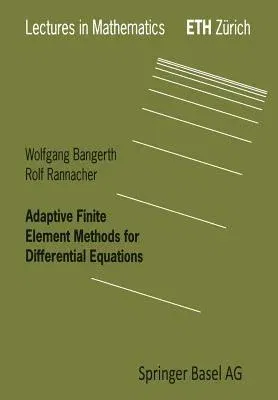Wolfgang Bangerth
(Author)Adaptive Finite Element Methods for Differential Equations (2003)Paperback - 2003, 23 January 2003

Qty
1
Turbo
Ships in 2 - 3 days
In Stock
Free Delivery
Cash on Delivery
15 Days
Free Returns
Secure Checkout
Part of Series
Lectures in Mathematics. Eth Zürich
Part of Series
Lectures in Mathematics Eth Zurich
Part of Series
Lectures in Mathematics. Eth Zurich
Print Length
208 pages
Language
English
Publisher
Birkhauser
Date Published
23 Jan 2003
ISBN-10
3764370092
ISBN-13
9783764370091
Popular Books
Ships in 12h 42m 10s
Description
Product Details
Authors:
Book Edition:
2003
Book Format:
Paperback
Country of Origin:
DE
Date Published:
23 January 2003
Dimensions:
24.13 x
17.02 x
1.27 cm
ISBN-10:
3764370092
ISBN-13:
9783764370091
Language:
English
Location:
Basel
Pages:
208
Publisher:
Series:
Weight:
362.87 gm













